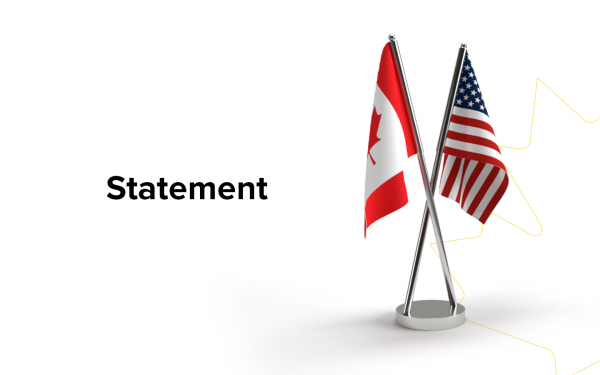LNG—Canada has supply to meet the global demand
As published in Policy Magazine
Consider the following:
- Global demand for liquified natural gas (LNG) is forecast to almost double by 2040.
- Canada has the ability to produce LNG with the world’s highest environmental standards and lowest carbon footprint.
- Customers in Asia and Europe are keen to buy Canadian LNG to reduce their emissions from coal and to alleviate price pressures caused by energy shortages.
It all adds up to a massive opportunity for Canada – not just an economic opportunity, but a chance to help reduce global greenhouse gas emissions (GHG) and contribute to the fight against climate change.
Yet the frustrating truth is that our country, which has been blessed with an estimated 300-year supply of natural gas at current consumption rates, currently exports only a tiny amount of LNG.
Why? The answer is certainly not obvious to our friends and allies overseas.
In the spring of 2022, during a visit to Korea, I met with a senior government official to discuss opportunities for increased bilateral trade and investment. He was struggling to understand why Canada doesn’t export more of its abundant natural resources, including natural gas.
Could it be, he inquired, that we are deliberately hoarding our resources for our own use?
I assured him that we are doing – would do – nothing of the sort. After all, we Canadians like to think of ourselves as generous and fair-minded, always willing to lend a hand to our international partners when they need help.
But I couldn’t blame him for asking the question.
For too long Canada has been content to sit on the sidelines while other countries – notably the United States, Qatar, and Australia – have reaped the benefits of rising global demand for LNG.
Although the LNG industry in Canada is still in its infancy, the technology to produce it is far from new. The process was first discovered in 1820 by British scientist Michael Faraday, who successfully chilled natural gas to -161° C, the temperature at which it becomes liquid at 1/600th its original volume.
Almost a century later, the first commercial LNG plant was constructed in West Virginia. Before long similar facilities were being built around the world to meet energy demand in places that could not be reached economically by pipeline.
Over the past two decades, global LNG demand has more than doubled to 380 million tonnes. The market is expected to grow to 700 million tonnes by 2040, according to a study by Shell.
Most of that increase will be driven by Asia, as countries across the region seek to reduce their reliance on coal by switching to natural gas, the cleanest-burning fossil fuel.
When used to generate electricity, gas produces half as much carbon dioxide as coal, making it an important source of energy for countries that are transitioning to a low-carbon future.
Globally, the transition from coal to gas has already prevented around 500 million tonnes of carbon dioxide emissions since 2010, the International Energy Agency estimates.
That’s equivalent to putting an extra 200 million electric vehicles on the road over the same period – 10 times as many EVs as currently exist.
More than 100 LNG plants are now in the works around the world, according to McKinsey. Although Canada is the world’s fifth largest producer of natural gas, only one world-scale LNG export terminal is currently under construction in this country: LNG Canada.
Located in Kitimat, B.C., in the traditional territory of the Haisla Nation, the $17 billion project –$40 billion, when upstream assets and the associated Coastal GasLink pipeline are included – represents the single largest private investment in Canadian history.
When LNG Canada’s first phase is completed in 2025, it will be capable of exporting 14 million tonnes of LNG per year, with a potential for future expansion to 28 million tonnes.
Importantly, GHG emissions from LNG Canada’s Kitimat operation will be lower than any facility currently operating anywhere in the world today: 35 per cent lower than the world’s best-performing facilities and 60 per cent lower than the global weighted average.
Two other, smaller, projects on the West Coast – Cedar LNG, also in Kitimat, and Woodfibre LNG in Squamish, B.C. – have received regulatory approval but are not yet under construction.
When those two projects are completed, the LNG they produce will also be among the cleanest in the world, given the advanced technology being used, the high environmental standards set by the federal and B.C. governments, and the fact that hydroelectricity will be used to power parts of their operations.
Among other potential Asian customers, Japan and South Korea are particularly keen to be able to import Canadian LNG. Low-carbon Canadian LNG will both assist their efforts to end reliance on coal-fired electricity and improve the sustainability credentials of their manufacturers by allowing them to use the lowest carbon lifecycle gas and electricity.
At the recent G20 meeting in Indonesia, Canada, the United States, Japan and the European Union signed a $20 billion climate finance deal with the host country that will help Indonesia reduce its reliance on coal and move to less GHG-intensive forms of electricity.
This, too, could spur interest in low-carbon Canadian LNG. Similar discussions are reportedly in the early stages with India and Vietnam.
Meanwhile, Russia’s curtailment of natural gas flows to Europe has pushed up demand for LNG in that region. During a visit to Canada in August, German Chancellor Olaf Scholz made it clear his country was eager to import natural gas from Canada.
“As Germany is moving away from Russian energy at warp speed, Canada is our partner of choice,” he told a business audience in Toronto. “For now, this means increasing our LNG imports. We hope that Canadian LNG will play a major role in this.”
Alas, regulatory hurdles and lack of political will have for years delayed the development of LNG export infrastructure on Canada’s east coast. As a result, Scholz left Canada empty-handed, even though a recent Leger Marketing poll showed that most Canadians would back the construction of new east coast terminals to export gas.
The Germans, for their part, quickly pivoted to other suppliers, signing long-term LNG import contracts with producers in Australia, Qatar and the United States.
Each of those contracts represents a huge lost opportunity for Canadian workers and the communities that depend on our energy sector – not to mention a loss of government tax revenues and royalties that would have supported badly needed public services such as healthcare and education.
If there a silver lining, perhaps it’s that our inability to supply Germany with natural gas at its time of need has raised public awareness of the enormous potential of Canada’s nascent LNG industry.
For the sake of our economy, our commitment to reducing global GHG emissions, and future generations of Canadians, it’s an opportunity we cannot afford to squander.











